Osmo Nutrition – Part 2
This is part-2 of our tech-and-review of Osmo nutrition. If you missed part one, it is located HERE.
The topic of nutrition and hydration is a complicated one. Ultimately, there are many ways to skin this cat, get to the same result, or whatever you want to call it. Of late, we’ve seen a lot of talk about moving to a lower concentration drink and eating real food. The problem – at least for long-course triathlon – is, how do we implement such a strategy? After all, aid stations don’t serve rice cakes, sandwiches, and diluted sports drink. We can carry some amount of food with us on our bikes, but I’d venture to say it’s nearly impossible to carry enough solid-food calories for a 112 mile bike ride – at least one that does NOT include any stops at the gas station to refill. Even if we can carry enough food, lugging around enough fluid would have a huge weight penalty.
I posed some of these challenges to Dr. Sims, who agreed that the answer isn’t easy. I asked her to create an Ironman-distance nutrition plan for me – one that had a specific set of limitations. As you can guess, her ‘perfect-world’ plan would include aid stations stocked with her drink, along with each participants’ favorite foods. At least for now – that’s not going to happen.
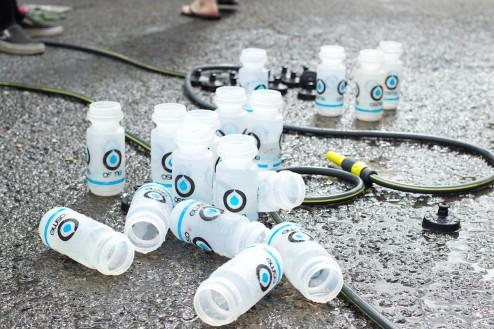
Before we dive in to the numbers and hour-by-hour plan, I want to address some issues and questions that came up from part 1 of the article. As an aside, I’m keeping my opinion out of it; I’ve had race success and failure on a variety of different nutrition plans. A lot of your questions are my questions, too. I will say that without a doubt, race nutrition has been one of my biggest struggles.
Is it ALL about osmolality?
While solution concentration is certainly a key part of the Osmo story, Stacy was very clear with me that it is not the only piece of the puzzle. More specifically, she makes an important distinction: Liquids – even those that contain calories – are not intended to be a source of calories. Huh?! Yes, you read correctly.
Dr. Sims says that Osmo contains calories simply as a by-product. It contains glucose and sucrose in a specific ratio – because this speeds fluid absorption (i.e. your body will take this solution in faster than plain water). It just so happens that there are some calories in there, too. If your brain came to a screeching halt there for a moment, don’t worry – you’re not alone.
Along these same lines, I asked about other types of sugars, namely fructose and maltodextrin. What’s the deal?
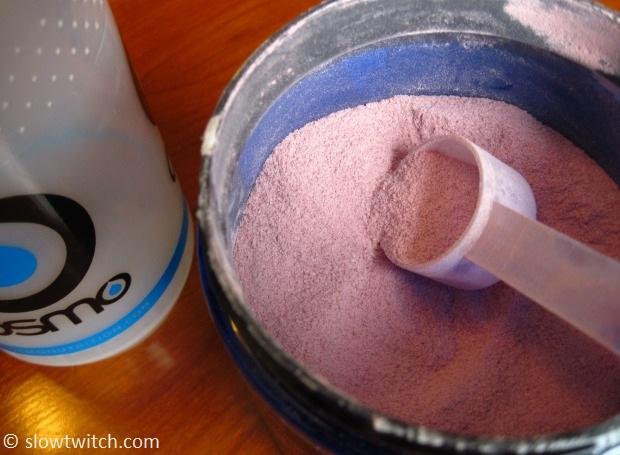
Fructose: I’ve heard fructose getting a bad rep over the past few years. We all know about high fructose corn syrup, and have slowly seen it vanish from many sports and health-related products. But what about plain ol’ fructose? This is the very long story made short, from Dr. Sims:
“Fructose (a.k.a. fruit sugar) is one of the monosaccharides (other two are glucose and galactose). It is a simple molecule and it is notorious for GI distress because first it has to be actively transported through the intestinal cell wall – then go into the hepatic portal vein to be delivered to the liver where it is then broken down into sub-parts for fuel.”
In simple terms, it requires more steps and time to break down than something like glucose. Easy enough.
Maltodextrin: This is an oligosaccharide, typically manufactured from corn (in the US, where corn is subsidized by the government), and is a very common ingredient in many modern processed foods. I’ve heard mixed reviews on its use for sports drinks; some nutritionists’ information suggests that it shouldn’t be consumed by folks with sensitive stomachs and certain food allergies. According to Dr. Sims, it is attractive on-paper, as it can be used to make a low osmolality drink mix. However, she warns that due to the large molecule size, it takes longer to break down, and tends to pull water from your body and into the intestines (the reverse of what we want).
Pass the salt, please
Aside from sugar, there is another key component to understand in a drink – electrolytes. What type, amount, and ratio are appropriate? Dr. Sims notes that Osmo is somewhat unique in that it uses sodium citrate, rather than the usual sodium chloride. She says that sodium chloride can be problematic for some people, causing GI distress in high amounts. In addition, sodium citrate is a cofactor for cellular respiration (the process of converting food in to usable energy).
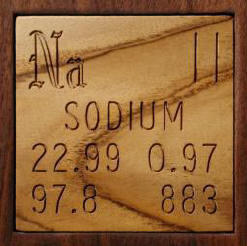
Somewhat similar to the calorie content of Osmo, the sodium content is not intended to replace lost sodium – it is simply there to improve the absorption of the fluid. Dr. Sims argues that we ought to load up on sodium in the days leading up to a race; if we do that, large amounts of supplemental sodium should not be necessary during the event. As an aside, I find that somewhat funny, as a 24oz bottle of Osmo contains 480mg sodium – MUCH more than many off-the-shelf sports drinks.
Ironman Plan
If you’re like me, science class was hard to sit through. After all of the in-depth mumbo-jumbo, I wanted to learn some actual application.
In the past, I’ve always made a spreadsheet for every long-course race, detailing my hourly intake of fluid, calories, and electrolytes – for both the bike and run. I try to include enough wiggle room for race-day adjustment of temperature (i.e. if the day turns out to be hotter or colder than expected). I will follow the same outline here, minus the electrolytes. Why? According to Dr. Sims, the importance of excess sodium is greatly over-stated, and there is no definitive evidence that it wards off cramping. She argues that calcium intake is much more important, along with the ratio of total electrolytes we take in. In fact, she recommends taking peppermint Tums during the race – they are rich in calcium, act as a buffer, and the peppermint is supposed to settle your stomach.
I provided Stacy with the following limitations:
1. I can start the bike and run with Osmo, but I will NOT refill bottles (i.e. carry individual packages to mix with water on-course).
2. Begin the ride with two Specialized Purist 26 oz bottles on the frame, and two more in Special Needs. I’ve tried every hydration system under the sun, and always find myself going back to two bottles on the frame. It simply works for me. As a result, total potential Osmo for the bike = 104oz.
3. The real food must be reasonable. I can live with a bento box (gasp!), but I refuse to carry 10lbs of food that requires constant unwrapping and maintenance.
4. My normal two-piece race jersey has two pockets available, but I’d like to minimize their use.
5. I am willing to carry a hand bottle to start the run, and can get a new one at Special Needs, but again – no refilling along the way at aid stations. Total Osmo for run = 40 oz.
Here are the stats (fluid and food ranges provided by Dr. Sims):
Male, 77kg / 170lb
FLUID (BIKE AND RUN): 10ml/kg – 15ml/kg per hour
For me: 770 – 1155ml per hour (26 – 39 oz)
FOOD CALORIES (BIKE): 3.5 – 4 calories (kcal) per kg per hour
For me: 270 – 308 kcal per hour
FOOD CALORIES (RUN): 3 – 3.5 kcal per kg per hour
For me: 231 – 270 kcal per hour
TOTAL BIKE KCAL: 270–308 from food + 114–175 from Osmo = 384 to 483kcal per hour
TOTAL RUN KCAL: 231–270 from food + 114–175 from Osmo = 345 to 445kcal per hour
The Plan:
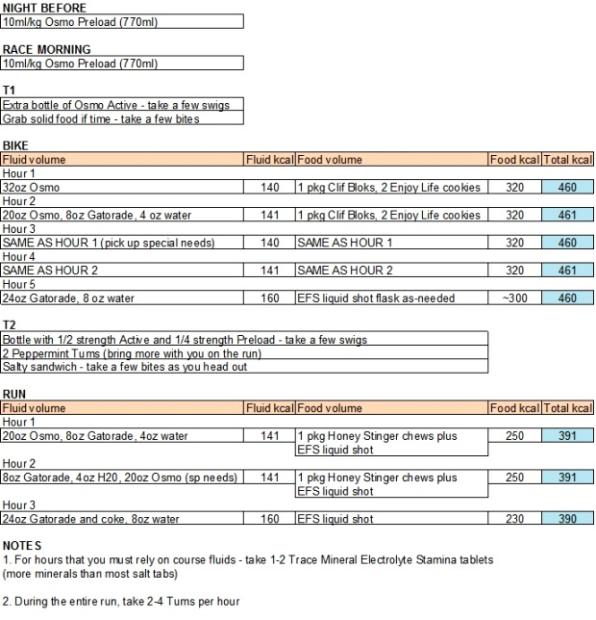
On paper, it looks doable. Note that the inclusion of EFS Liquid Shot was my doing; Stacy would have recommended going the route of 100% solid or semi-solid food. I chose to do this for easy-of-carry, and ultimately to take away some chewing work.
As far as the hour-by-hour schedule, I always build flexibility in to this. Special Needs isn’t at exactly, mile 56 and 13 on every course. Sometimes you are going slower than expected; sometimes faster. On race day, I keep a mental tally of how I’m doing on the schedule. For example, if I’m not 50% done with my total bike intake by mile 56, I know that I have some catching up to do (but the idea of the schedule is to avoid this entirely).
Is this the exact schedule I’ll follow? I’m not sure. That’s why we test in training. Maybe I’ll vary the food type more; I chose what I did based on current preference and keeping the math easy. Maybe the order-of-intake will be slightly different. The idea is to think of as many caveats as possible ahead of time, so we’re prepared for the worst on race day.
I agreed to experiment with this plan for the season, but with no guarantees of a positive review later-on. Of course, my hope is that it does work out great – but real-world testing will tell the real tale.
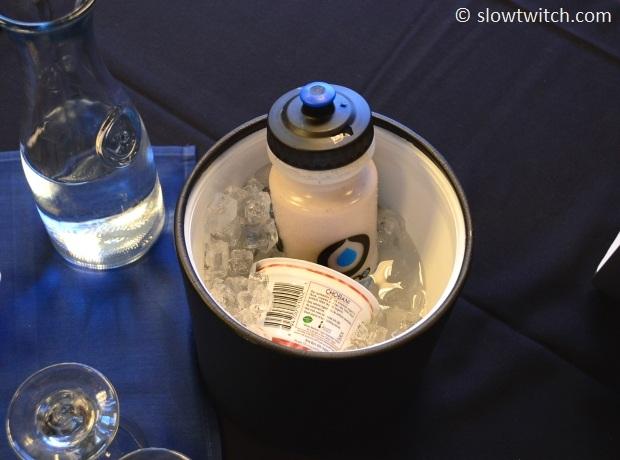
Taste, Price, and Competition
How does Osmo Active taste? While this is always subjective, I like the taste. It is mild – especially considering how high the electrolyte content is. It isn’t something that I’d likely drink just sitting around, but during a hard workout, it is very palatable. I’ve tried both the orange and blackberry flavors, and like them both.
While we didn’t discuss the Preload and Acute Recovery products in-depth, they seem to have gotten mixed reviews on taste. The folks at Osmo recognized this, and reformulated both products at the beginning of the year. I have been using the revised Acute Recovery, but never tried the original. To me, I put it near the top-of-the-heap for powdered recovery drinks. It’s no chocolate milk (which I don’t drink due to the lactose content), but it’s much better than some of the other recovery drinks I’ve tried. I have not tried the new Preload yet, as it wasn’t ready in time for this article.
As you can see, Osmo recommends mixing Acute Recovery with water or almond milk. Being the non-conformist that I am, I’ve been illegally mixing with coconut milk.
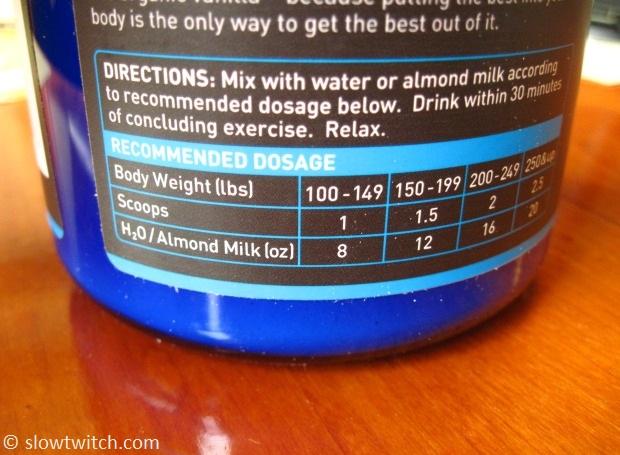
The price of Osmo is – to me – the only argument I can find against it. A canister containing twenty 16-ounce servings will run you $20. That’s the same price as an equal serving of Skratch Labs Exercise Hydration Mix.
Speaking of Skratch (a product I like), more than one person has asked whether Osmo is the same thing. If you read the early reviews of Skratch product, you’ll see that Dr. Sims was involved in its development. Is this simply her own branded version of it? If not, what are the differences? At first glance, the nutrition label reveals that Osmo has a higher amount of sodium and potassium per serving. Take it for what you will, but Dr. Sims was not willing to comment directly on the topic. Rather, she sent me a list of what she considers to be the least-known value-adds of Osmo:
“Osmo uses a unique ratio of glucose-to-sucrose, based on controlled testing for GI distress. We use organic fruit – ironically there can be 'fillers' of maltodextrin and silicon dioxide in organic fruit as flow agents; I refused to use this kind of fruit, so we sourced organic dried fruit powder with no fillers or flow agents, and the farm is fair-trade for those powders, so we cannot source directly in the USA.
All the minerals and vitamins are pharmaceutical grade and GMO-gluten free (again, the vitamins can be plated to fructose that isn't guaranteed to be GF or GMO free). We also use non-'bone-char' sugar – yes, almost all the sugar in the USA is whitened/bleached by the charred bones of animals; we use Glory Bee sugar that is charcoal filtered with charred wood.”
Solid Food Soup
To close, I want to address the many questions about solid food interaction with liquid. On the surface, it seems to make sense that everything is going to mix together in our stomachs into a ‘soup’ of sorts. Does drink osmolality go out the window once you take a bite of that gas station apple pie?
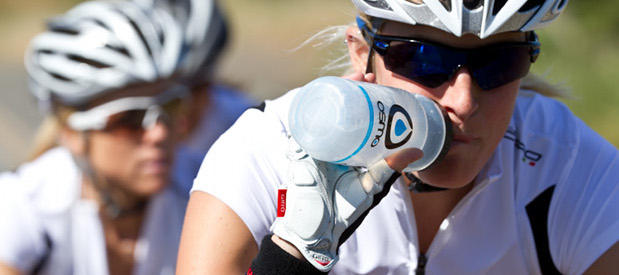
Because I’m not a scientist, I’m going to quote Dr. Sims on this one (don’t blame the messenger – you asked for it).
“I get this question a lot! There is a rate limiting effect of macronutrients getting into the gut… again, osmolality isn't the gold standard of gastric emptying or fluid absorption, it is the composition of the fluid (primarily the carbohydrates). The body isn't linear and digestion is an interesting process.
Basically, the rate of gastric emptying is regulated such that isoenergtic amounts of carbohydrates, proteins, or fats are delivered to into the small intestines – the MOA of the body's ability to detect as yet unmetabolized energy from a variety of sources is still not understood, but it isn't the osmolality of the chyme (mixed up food and fluid) or the broken down meal nutrients that regulate the transfer of the mixed macronutrients into the intestines. What this does, in a physiological sense, is ensure a constant rate of energy delivery to the small intestines.
Fluid composition comes into play separate from the food ingested. Volume ingested and solutions with a carbohydrate concentration of ~3% or less (comprised of physiological relevant sugars sucrose and glucose) with sodium, rapidly exit the stomach into the intestines. The theory here is water absorption is a quicker action than macronutrients, thus fluid out perpetuates water absorption to aid in digestion/blood circulation/metabolic waste.
Digestion is complicated but the body does a really good job of "titrating" energy so that everything isn't dumped in to the intestines all at once. There are feedback receptors sensitive to carbohydrate, fat, protein, sodium, potassium etc… to allow small amounts of macronutrients to exit the stomach into the intestines little-by-little (to try to keep a steady stream of energy going). Fluid is different; absorption starts in the stomach and quickly leaves to the small intestines where 95% of water exchange takes place. When you mix food and fluid, the fluid still exits faster than the macronutrients (especially if it’s a solution of glucose+sodium). The 'soup' in the stomach isn't really a 'soup', more like hearty stew over a colander – some of it runs out quickly, other of it is caught until it gets mushed up and pushed through the holes.”






